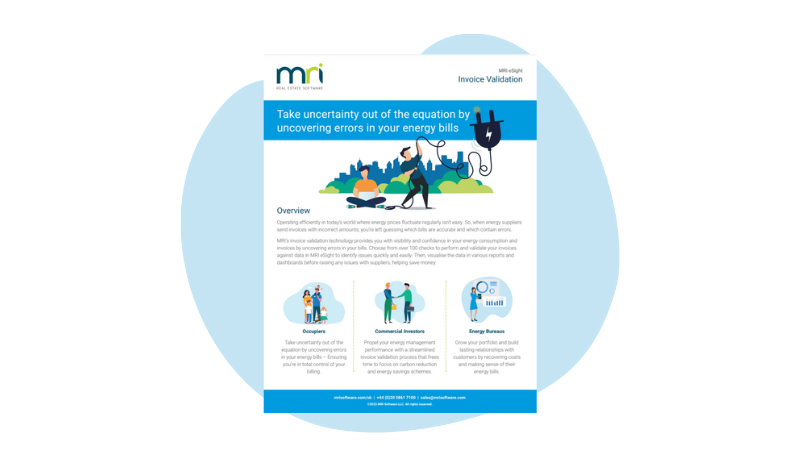Utilising energy data to achieve corporate sustainability goals
When it comes to driving corporate sustainability, a key factor, and major hurdle to overcome, is having the tools to efficiently target and measure performance. Targeting, firstly, revolves around the relationship between energy consumption and relevant driving factors, such as production outputs and weather. This relationship is then analysed and used to create a baseline. A baseline uses historical data to generate a usage model of what to expect average consumption will be for a certain time period. After the baseline is created, variations in energy usage can be identified and realistic targets can be set to identify areas to reduce consumption.
Targeting and measurement issues usually stem from a wide variability in production output, which creates a very manual and tedious job involving data entry, extraction and spreadsheet creation. However, when creating targets and key performance indicators (KPIs), you need the right data. The need for standardised data then becomes extremely apparent when attempting to effectively report on energy usage and consumption.
Energy management software (EMS) has the unique ability to solve a variety of energy management hurdles, including resourcing, metering and integration, utility analytics, reporting, and change management, as well as provide a turnkey solution that consolidates energy related data into one system.
So how does an energy manager utilise energy management software to improve targeting to evaluate KPIs? In this blog, we’ll highlight how to overcome the hurdle of managing targets and KPIs, as well as the role the EMS plays in this process.
Eliminating manual processes – An EMS’ role
Targeting and performance measurement are key to ensuring a corporate energy program succeeds. What’s usually a time-consuming and manual process, requiring a large amount of manual data entry and spreadsheet creation, generating and evaluating targets where utility consumptions are compared against the production activity that drives them can be a daunting task.
With a turnkey energy management software, like MRI eSight, energy managers can replace those spreadsheets and manually generated reports with automated processes since the EMS can consolidate utility data and production volumes. A turnkey EMS can also generate consumption targets based upon production volume forecasts, production schedules, outside air temperature and other driving factors. These targets can then be recalculated and updated daily, based upon the latest estimates and forecasts to ensure fair and accurate objectives. Also, real-time interval data in the EMS will make it possible for short interval control of utilities, and it can capture equipment performance metrics to view live and historic trending of equipment efficiencies and other low-level data.
The ability to measure usage paves the way for proper energy management. Being able to view any meter’s live or historical readings over any span of time is a necessity in order to accurately gauge trends and create dynamic forecasts.
Enterprise-wide management
The energy management software would be the central repository for all utility metering data, providing a complete toolkit for viewing data, identifying and correcting data problems, analysing consumption patterns, finding anomalies and centralising the reporting of KPIs for utilities.
Empowered with this data, energy managers can now bring this key information out of the managers’ offices and into the fingertips of equipment operators. This will prove to be a pivotal factor to gain energy management buy-in across all sectors of an enterprise.
Achieving corporate sustainability goals and driving energy efficiency is essential for modern businesses. It requires a complete rethink of how you approach the role and projects. You might be in this position, so how do you balance all these everyday tasks and meet your business’ aggressive sustainability goals?
Take uncertainty out of the equation by uncovering errors in your energy bills
Operating efficiently in today’s world where energy prices fluctuate regularly isn’t easy. So, when energy suppliers send invoices with incorrect amounts, you’re left guessing which bills are accurate and which contain errors. Gain peace of mind and …
